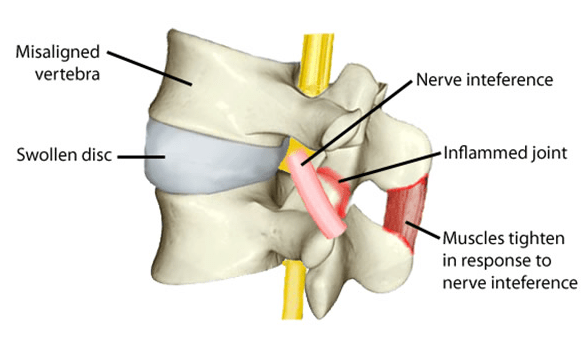What Is Subluxation?

You may have heard of the term subluxation before, but unless you’ve had personal dealings with it, you may not really understand what it is or what damage it can truly cause. The short answer is that a subluxation is a misalignment of the vertebrae of the spine. This can happen due to all sorts of reasons, and the side effects can vary from person to person. But one thing that all sufferers have in common is that these subluxations definitely harm your health and should be corrected. To determine whether this is a problem in your life, take a look at these common symptoms.
Symptoms
Some of the common symptoms of a joint subluxation include:
- Pain around the injured joint
- A sensation of the joint being unstable
- Swelling of the joint
- Limited mobility of the joint
- Bruising or discoloration
- Possible loss of feeling or numbness
Causes
Subluxations most often occur after trauma to the joint. That trauma can include:
- Direct force injury, such as from a motor vehicle accident or sports injury
- Wear and tear from daily activities
- Overuse injuries, including when athletes are training
Treatment
After examining your injury, your doctor will likely need to move the joint to put it back in its proper place through manipulation, which involves turning or pulling the limb.1 Once the joint alignment is confirmed and your doctor has ruled out any complications, treatment can be focused on reducing inflammation of the affected joint. Steps that can be helpful to reduce inflammation include:1
- Protection: You should keep your joint still to prevent another injury. Your doctor may suggest a splint or other device to help protect an unstable joint.
- Rest: Limit activity and avoid putting weight on the body part to allow the injured joint to rest.
- Ice and compression: This can help to relieve pain and swelling. Make sure you have a thin cloth between the ice and your skin. Apply the pack for 15 to 20 minutes at a time. Your doctor may suggest an elastic bandage to help provide some compression as well.
- Elevation: Place the injured joint above the level of the heart while laying down to help inflammation subside.
Your doctor may also suggest nonsteroidal anti-inflammatory drugs (NSAIDs) to alleviate swelling and inflammation.
Once the acute inflammation has subsided, your doctor may suggest a long-term treatment plan. Most of the time, joint subluxations are one-time events, and you will be able to recover the full function of the joint. However, some other injuries can cause recurrent problems. If your symptoms of instability persist, then you should seek medical help to determine a long-term plan, which may include physical therapy to strengthen the muscles and ligaments around the joint.
Occasionally, surgery may be necessary if your doctor isn’t able to realign your joint through manipulation. Surgery may be also be required to stabilize the joint or to treat fractures that occur along with the subluxation.
If you suspect that you have a subluxated joint, the most recommended solution is to see a chiropractor. However, you can find some relief through at-home solutions. Try to stretch, de-stress, monitor your sleep, and use ice packs.
If you’d like a professional opinion to determine the presence or severity of your subluxations, call us at 910.246.0606 to schedule your appointment. We provide all of our patients with thorough exams before recommending treatments. You’ll receive a custom strategy to help manage the pain of subluxation and will work out a plan that is best for you.
